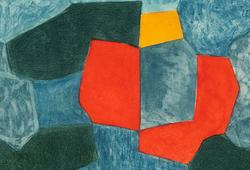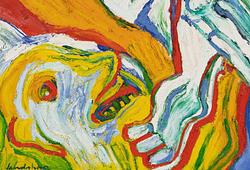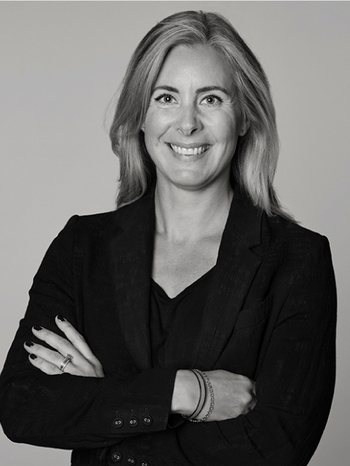Ernst Billgren
Untitled
Signed EB. Oil on panel in artist's frame 104 x 134 cm.
Provenance
Acquired directly from the artist.
More information
Since the early 1990s, Ernst Billgren has painted countless pictures of homes, ranging from bathrooms and bedrooms to drawing rooms and living rooms. The interiors are full of references to the past, to history, art and cultural heritage, with everything from bulging French dressers to spartanly furnished motel rooms and Bruno Mathsson armchairs. The rooms feel stiff and desolate despite the interiors being fully furnished. The deserted feeling must be due to the absence of people. Traces of her are nevertheless evident as the rooms are seemingly thoughtfully furnished, whether it is the palace interior or the bourgeois apartment in the city. In several paintings, animals and nature have taken over the human space. Birds, deer and conifers have made themselves at home on soft carpets and upholstered armchairs. The forces of nature seem to be striving to reclaim their lost territory by breaking down the sumptuous salons and drawing vitality from the decay. In the suite of large interior paintings that Ernst Billgren painted starting in 1999, the color green is recurrent. It forms a colorful link between outside and inside and further reinforces the feeling that the boundary between nature and culture is becoming blurred.
Inspired by the Grimm brothers' fairy tales, animals became an early tool for Billgren. In his book “What is art and 100 other very important questions”, he asked himself the question he says he gets asked most often: “Why are you so interested in foxes?”. The answer was: “Short answer: What foxes? Long answer: If you walked into a chemist's study, you'd probably find lots of test tubes and conclude that he was interested in test tubes. But I don't think so. He is probably looking to discover a new enzyme or element, or find a cure for some disease. Test tubes are tools, and he probably doesn't see them at all and has no interest in them or in foxes.”
From spring to autumn 2025, Ernst Billgren will be featured with several new works in the exhibition "Ernst Billgren – New Memories" at the Nationalmuseum in Stockholm.
Artist
Ernst Billgren was born in Stockholm in 1957 and studied at Valand Academy from 1982 up until 1987. His artistic career is marked by remarkable diversity, which is quite unique in the Swedish art scene. He is a painter, printmaker, sculptor, author, debator and also worked in film and stage design. His artistic production spans over a multitude of disciplines, encompassing painting, sculpting, set design, furniture design, literature, film, and music. Across these diverse fields is a distinguishable continuity of nature, national romanticism, and mythology. Billgren demonstrates great craftmanship by being able to work in numerous materials such as mosaic, wood, bronze, cement, tile and glass. The defining characteristic of Billgren is his his bold approach to challenging conventional ideas of what constitutes good art. He blends fine art with kitsch and introduces animals and birds into refined settings, blurring traditional boundaries.
Ernst Billgren's work is known for its ability to provoke and leave a lasting impression, ensuring that viewers are engaged and often stirred by his unconventional artistic expressions.




































